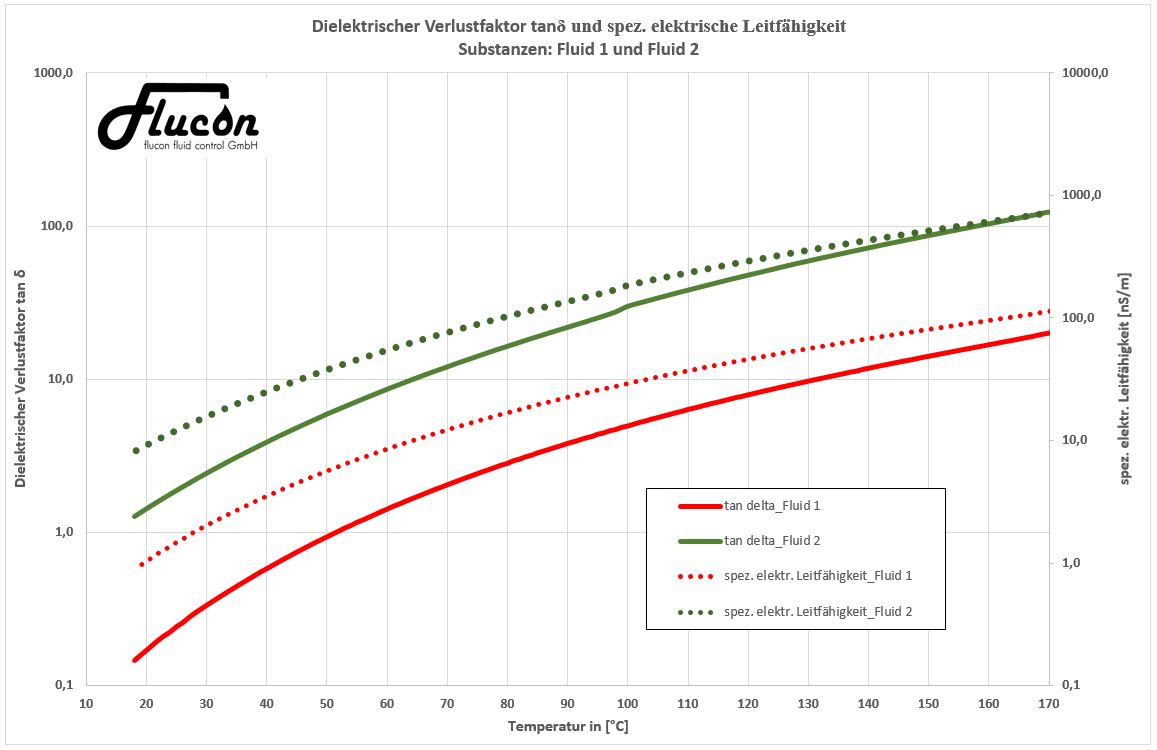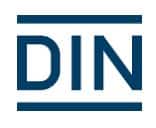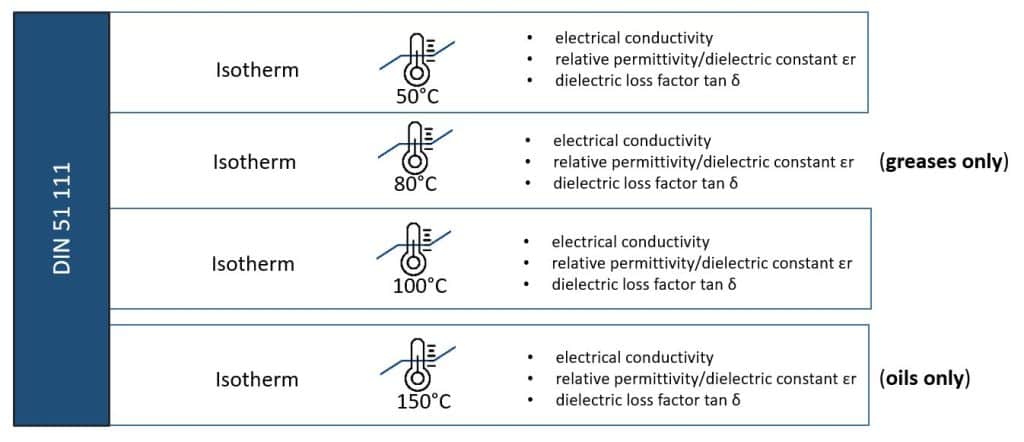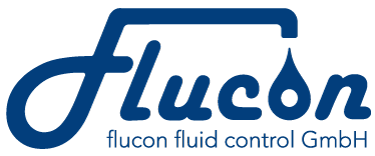Dielectric fluid properties
Test spectrum of the EPSILON+ in accordance with DIN 51111
Specific electrical conductivity ϰ
The specific electrical conductivity, or conductivity, is a quantity which is often characterized by the symbol κ and indicates the ability of a substance to conduct electrical current. Its SI unit is S/m (Siemens per meter).
Our EPSILON+ Dielectrity Meter delivers measured values in nS/m and uS/m.
The suitability of a fluid to conduct electricity is determined by the number and mobility of the charge carriers within the liquid.
Dielectric loss factor tan δ (DDF)
The dielectric loss factor or dielectric dissipation factor (DDF) tan δ is a measure of the amount of energy that a substance in the alternating field absorbs and converts into heat loss. High dissipation factors are not suitable as insulating material in high frequency applications.
The loss factor is an indication of unwanted heat generation and thus provides information regarding the increased risk of thermal breakdown in transformer oils.
As can be seen in the following exemplary graph, both the specific electrical conductivity and the DDF of a liquid depend on its temperature:
Exemplary results (measured with EPSILON+)
(Left Y-axis: DDF; right Y-axis: specific electrical conductivity; Y-axis: temperature)


Relative Dielectric / Permittivity / Dielectric Constant ε r
The relative dielectric, or permittivity (lat .: permittere = to let through), of a substance is a measure of its permeability to electric fields.
The electric field constant ε 0, which corresponds to the permittivity of the vacuum, serves as a factor for determination of the permittivity of a substance:
ε = ε 0 ε r
Here, ε r represents the substance-dependent relative permittivity. This is a dimensionless unit which is also temperature-dependent, as measurements with the EPSILON+ will show:
Exemplary results (measured with EPSILON+)

The all-new DIN 51111 test standard:
 The DIN 51 111 standard "Electrical properties of fresh and used oils from electric drives in vehicles – Measurement of the specific electrical conductivity, the relative permittivity (εr) and the dielectric dissipation factor (tan δ)" was published in February 2024.
The DIN 51 111 standard "Electrical properties of fresh and used oils from electric drives in vehicles – Measurement of the specific electrical conductivity, the relative permittivity (εr) and the dielectric dissipation factor (tan δ)" was published in February 2024.
It describes the electrical fluid characterization and thus the determination of the above-mentioned parameters as a function of the temperature by means of flucon's EPSILON+ tubular capacitor system.
For oils, the isotherms 50°C, 100°C and 150°C are recommended. Thus, the dry-block thermostat can be used with the EPSILON+.

For the analysis of grease, on the other hand, the temperatures 50°C, 80°C, 100°C are more suitable and likely to be specified in a later edition.

